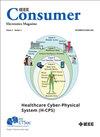QFBN: Quorum-Based Federated Blockchain Network for Healthcare System to Avoid Multiple Benefits and Data Breaches
IF 3.7
4区 计算机科学
Q1 COMPUTER SCIENCE, HARDWARE & ARCHITECTURE
引用次数: 1
Abstract
Healthcare organizations are responsible for maintaining and auditing the claims received from policyholders or service providers. The traditional system of storing and auditing claims is centralized to the corresponding organizations. As the centralized auditing system does not allow the integration of the claims among different insurance organizations, an individual policyholder or a service provider may submit claims to more than one insurance organization to get multiple benefits. Multiple benefits can be avoided by collaborating with the authority of different organizations. However, collaborating different organizations raise the privacy and security concerns. Hence, in this article, we propose a quorum-based federated blockchain (QFBM) network, a privacy-preserving decentralized system to integrate health insurance claims of different organizations in a secure manner. The performance of the proposed QFBN framework in avoiding multiple benefits and providing privacy and security which is analyzed in terms of security incidents, mean time to detect, and mean time for vendors incident response are compared with the decentralized frameworks that developed for detecting healthcare frauds using blockchain. Based on the empirical results, it is observed that the QFBN framework provided an environment with better security for exchanging healthcare information.QFBN:基于法定人数的医疗保健系统联邦区块链网络,避免多重利益和数据泄露
医疗保健机构负责维护和审核从投保人或服务提供商处收到的索赔。传统的理赔存储和审核系统由相应的机构集中管理。由于集中审核系统无法整合不同保险机构之间的理赔申请,因此单个投保人或服务提供商可能会向多个保险机构提交理赔申请,从而获得多重赔付。通过与不同组织的权力机构合作,可以避免多重受益。然而,与不同组织合作会引发隐私和安全问题。因此,在本文中,我们提出了一个基于法定人数的联合区块链(QFBM)网络,这是一个保护隐私的去中心化系统,能够以安全的方式整合不同组织的医疗保险理赔。我们从安全事件、平均检测时间和供应商事件响应平均时间等方面分析了所提出的 QFBN 框架在避免多重利益、提供隐私和安全方面的性能,并将其与使用区块链检测医疗欺诈的去中心化框架进行了比较。根据实证结果,QFBN 框架为交换医疗保健信息提供了一个安全性更高的环境。
本文章由计算机程序翻译,如有差异,请以英文原文为准。
求助全文
约1分钟内获得全文
求助全文
来源期刊

IEEE Consumer Electronics Magazine
Computer Science-Hardware and Architecture
CiteScore
10.00
自引率
8.90%
发文量
151
期刊介绍:
The scope will cover the following areas that are related to “consumer electronics” and other topics considered of interest to consumer electronics: Video technology, Audio technology, White goods, Home care products, Mobile communications, Gaming, Air care products, Home medical devices, Fitness devices, Home automation & networking devices, Consumer solar technology, Home theater, Digital imaging, In Vehicle technology, Wireless technology, Cable & satellite technology, Home security, Domestic lighting, Human interface, Artificial intelligence, Home computing, Video Technology, Consumer storage technology.
 求助内容:
求助内容: 应助结果提醒方式:
应助结果提醒方式:


